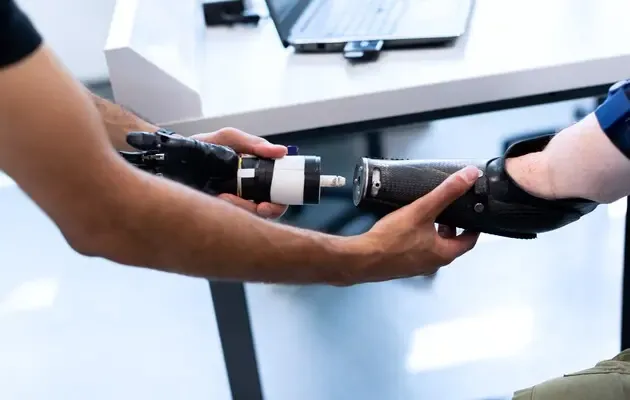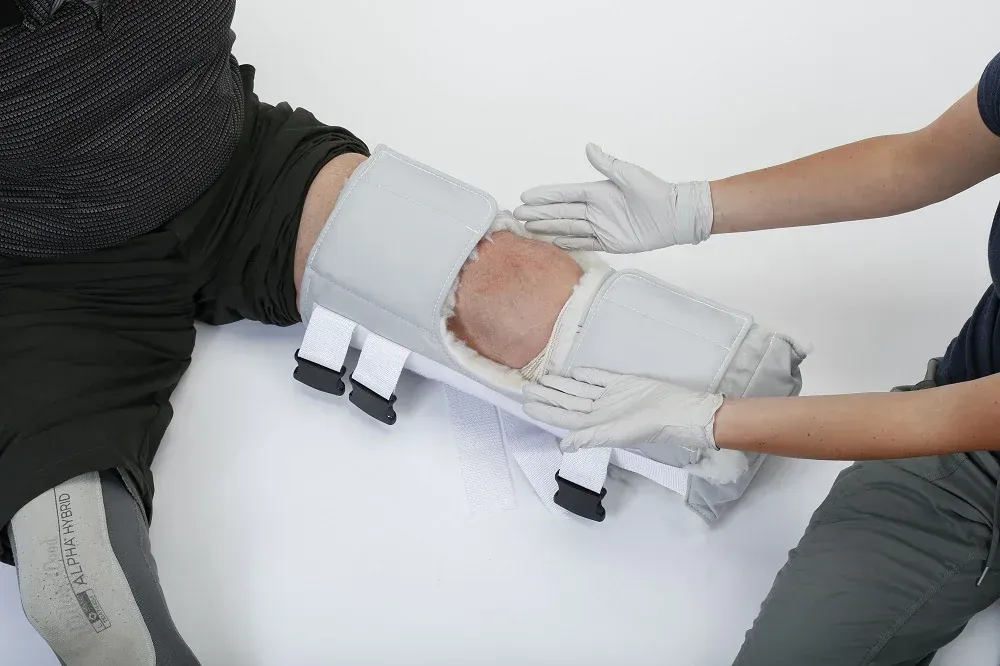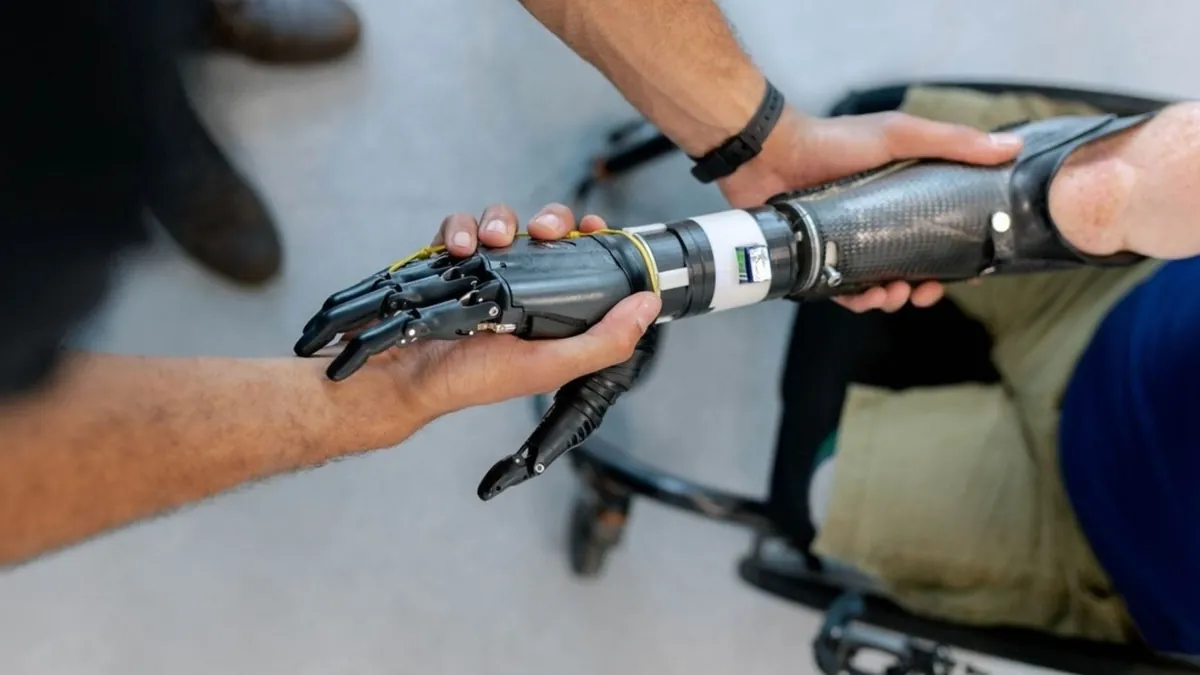The Fund for Social Protection of Persons with Disabilities told how Ukrainians without limbs can get prostheses and how the state prosthetics program works
Kyiv • UNN
Vitaliy Muzychenko spoke about the state program of prosthetics for people with disabilities. The process includes 5 stages: from injury to prosthesis operation, with primary and secondary prosthetics.

Vitaliy Muzychenko, Director General of the Social Protection Fund for Persons with Disabilities, told during a webinar that the state offers everyone who needs prostheses an algorithm of actions after an injury - step-by-step instructions for obtaining a prosthesis, features of primary and secondary prosthetics, as well as prosthetic rehabilitation, UNN reports .
Details
According to Muzychenko, the process of facial prosthetics involves 5 stages:
- Trauma;
- Amputation;
- Pre-prosthetic rehabilitation;
- Prosthetics - primary prosthetics and secondary prosthetics (provision of a highly functional prosthesis);
- Operation and repair - warranty and post-warranty service.

This is a route that starts with the stage of injury. Next, we talk about the stage that involves intervention in the form of amputation. At the same time, we need to pay attention to such a stage as pre-prosthetic rehabilitation and preparation, and this is where we see quite big shortcomings in terms of time loss and potential preparation of the patient for the next prosthesis. After these stages, we can say that when the patient is prepared in the format of either primary prosthetics or secondary prosthetics, certain procedures take place
He noted that restoring the functional capabilities of our defenders and people who have been injured, in particular as a result of hostilities, is one of the state's priorities.
Therefore, the state provides through the relevant program for the provision of all necessary auxiliary means of rehabilitation that are necessary for the patient in the conditions of the rehabilitation process
According to him, the rehabilitation system used to work in the format of providing auxiliary means of rehabilitation after receiving the status of a person with a disability, but today these mechanisms are separated from each other.
There is no need to wait for the establishment of disability in today's conditions
He noted that prior to the full-scale invasion, most injuries involving amputation of limbs were caused by road accidents.
Unfortunately, today, the war factor is the main cause of injuries and subsequent amputations. These are directly our defenders, our military, and citizens who are injured as a result of constant shelling
The CEO said that the first stage is the occurrence of circumstances, i.e. a person who has been injured. This is essentially receiving primary medical care and deciding on a further treatment system.
After this stage, a decision is made on the necessity and expediency of amputation. At the stage of amputation and preparation for amputation, in most cases, we insist on building mechanisms so that this work is carried out with an understanding of the patient's future, further rehabilitation care
According to him, after the surgical intervention, after the amputation, an important block is pre-prosthetic rehabilitation, or preparation for further prosthetics.
It is noted that the rehabilitation includes the stages of exercise, compression therapy, scar massage and stump hygiene.
The list of physical exercises is determined by a multidisciplinary rehabilitation team that oversees the rehabilitation process.
The scar is massaged by a physical therapist, and the person takes care of the hygiene of the stump personally.

It is important to choose the right set of physical exercises that will have a supportive function, help form the stump, and have adequate loads, taking into account the patient's physiological capabilities and health status
He emphasizes that it is necessary to pay special attention to the choice of prosthetist, because a significant number of prosthetic work activities are carried out in relation to the initial receipt of the prosthesis.
Currently, there are more than 106 companies in our country that provide various kinds of rehabilitation aids. In particular, we are talking about almost 60 companies that specialize in prosthetic and orthopedic products. We must understand that some companies specialize more in lower limb prosthetics, others in upper limb prosthetics. It all depends on the complexity of the situation, the level of amputation, and the prosthesis fixation system. It is very important at this stage to understand who the patient will work with in the future. Logistics, location, and representation play a key role here. As practice shows, primary prosthetics requires constant contact between a person and a prosthetist
The fourth stage involves the prosthetics itself, which is divided into primary prosthetics after the formation of the stump, and secondary highly functional prosthetics 12 months after the primary prosthetics.
Primary prosthetics - at the first stage of using a prosthesis after amputation, anthropometric data changes: the shape and parameters of the stump, the part of the body to which the prosthesis is attached, change. Muscle tissue shrinks or grows.
It is during this time that a person gets used to the prosthesis and learns its capabilities. A functional prosthesis is assembled on the basis of mechanical, pneumatic or hydraulic components.
Primary prosthetics provides an opportunity to master the techniques of using a prosthesis, which subsequently make it possible to use highly functional prostheses.

Secondary prosthetics - providing a highly functional prosthesis Highly functional prostheses are more difficult to use immediately. Due to constant adjustments and changes of the residual limb, the efficiency of the prosthesis is significantly reduced.
Also, a highly functional prosthesis is not appropriate for everyone due to a number of technical limitations, such as load, sensitivity to operating conditions, weight, and other characteristics.
The process of obtaining a primary prosthesis involves:
- submitting an application to social authorities;
- contacting prosthetics companies;
- visiting the enterprise;
- selection of a suitable prosthesis by the company;
- visits for fitting;
- getting a prosthesis.
The process of obtaining a secondary prosthesis involves:
- a person, having independently chosen a prosthetic enterprise, applies to it with the relevant application and documents;
- the prosthetist selects a complete set of prosthesis according to the functional needs of the person;
- The prosthetic company submits the documents to the Social Protection Fund for Persons with Disabilities for consideration;
- The Fund processes the documents, and if the decision is positive, a trilateral agreement is signed.
To understand the situation, currently the cost of prosthetic devices covered by the state is up to almost UAH 1.5 million for lower limbs and UAH 2.9 million for upper limbs
Recall
A modern center for prosthetics and rehabilitation of veterans will be opened in Ukraine. The center is being created by representatives of the Polish company EnForce Medical Technologies and the Poland Helps Ukraine, Siepomaga, and Solidarity Funds.